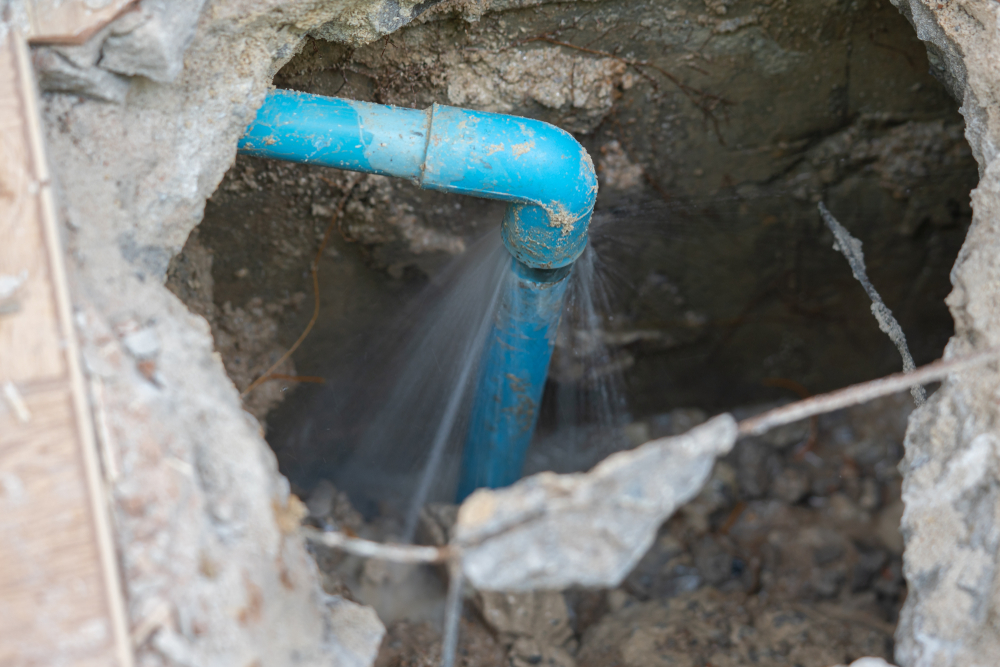Just how to Locate and also Fixing Water Leaks-- A Comprehensive Overview
Just how to Locate and also Fixing Water Leaks-- A Comprehensive Overview
Blog Article
What're your opinions on Finding hidden leaks?

Early detection of dripping water lines can alleviate a possible disaster. Some tiny water leaks might not be visible.
1. Examine the Water Meter
Every residence has a water meter. Checking it is a surefire way that assists you find leakages. For beginners, shut off all the water sources. Make sure nobody will certainly purge, make use of the tap, shower, run the washing maker or dishwashing machine. From there, go to the meter as well as watch if it will transform. Considering that no person is utilizing it, there should be no movements. If it moves, that shows a fast-moving leakage. If you spot no modifications, wait a hr or two as well as examine back again. This suggests you may have a slow leakage that can also be underground.
2. Inspect Water Usage
If you detect unexpected adjustments, regardless of your consumption being the very same, it implies that you have leaks in your plumbing system. An unexpected spike in your expense suggests a fast-moving leakage.
Meanwhile, a consistent boost each month, despite the same habits, shows you have a slow-moving leak that's likewise gradually escalating. Call a plumber to extensively examine your home, particularly if you really feel a cozy location on your flooring with piping underneath.
3. Do a Food Coloring Test
30% comes from toilets when it comes to water intake. Test to see if they are running properly. Decline specks of food shade in the storage tank and also wait 10 minutes. If the color somehow infiltrates your dish throughout that time without flushing, there's a leak in between the storage tank as well as bowl.
4. Asses Exterior Lines
Do not neglect to check your outside water lines also. Should water seep out of the link, you have a loose rubber gasket. One small leakage can squander tons of water and increase your water bill.
5. Evaluate the scenario and also evaluate
Property owners should make it a routine to inspect under the sink counters and even inside closets for any bad odor or mold and mildew development. These two red flags show a leak so prompt focus is called for. Doing routine assessments, also bi-annually, can save you from a significant problem.
If you know your house is already old, keep a watchful eye on your heaters, tubes, pipes and so on. Check for discolorations and also damaging as a lot of devices and pipelines have a life span. They will certainly additionally normally weaken because of deterioration. Do not wait for it to intensify if you presume leaking water lines in your plumbing system. Call a specialist plumber as soon as possible so you don't end up with an awful mess in your home.
Early discovery of dripping water lines can mitigate a possible disaster. Some tiny water leaks may not be visible. Examining it is a proven means that aids you uncover leaks. One little leakage can squander lots of water as well as increase your water costs.
If you presume dripping water lines in your plumbing system, do not wait for it to intensify.
How to Know If Your Home Has a Hidden Leak
Water Meter Reveals Inexplicable Water Usage
If you’d like to test whether or not there’s a leak somewhere in your home, you can do this using your water meter. Here is how to conduct the test:
Don’t use any water in your home for at least 30 minutes; this also means not turning on faucets or water-using appliances.
Go outside, and check your water meter for activity.
If your water meter shows that there was activity, even though no one was using any water, this proves that there is a leak in your home.Visible Mold or Mildew Growth
Leaks behind walls create moist, dark environments that allow mold and mildew to grow and thrive. Eventually, you might see mold growth forming on the wall closest to a hidden leak.
If mold is growing in an area that receives a high amount of moisture, such as a bathroom, it may simply be an indication that better ventilation is needed. However, if you see mold growth on a wall or the ceiling in an area where you would not expect, you probably have a hidden leak.
Musty, Mildew Odor
Sometimes you might not be able to see the mold or mildew that is growing as a result of a leak. However, the smell can give the problem away just as easily. If you catch a whiff of something musty, there’s a good chance that old water is collecting somewhere in your home that you can’t see.
Stained/Warped Walls, Ceilings, or Floors
When your home soaks up water, a variety of red flags can become visible, including ceiling stains, bubbling drywall, warped walls, and sagging floors. While these issues can be caused by excess humidity, they can also be signs that a pipe or plumbing connection has started leaking behind your walls.
Inexplicably High Water Bill
After a while, you get a general sense for what your water bill should be. If you own a pool or sprinkler system, your bill will tend to be higher during summer. However, if you receive a water bill that seems especially high, and you can’t figure out what caused it, then you may have a hidden leak somewhere that’s increasing your bill.
https://www.plumbingjoint.com/blog/2019/july/how-to-know-if-your-home-has-a-hidden-leak/

We hope you enjoyed our piece about Hacks to detect leaks. Thanks a ton for taking a few minutes to read through our piece. Are you aware of another individual who is curious about Detecting hidden plumbing leaks? Take a moment to share it. I enjoy reading our article about Detecting hidden plumbing leaks.
Report this page